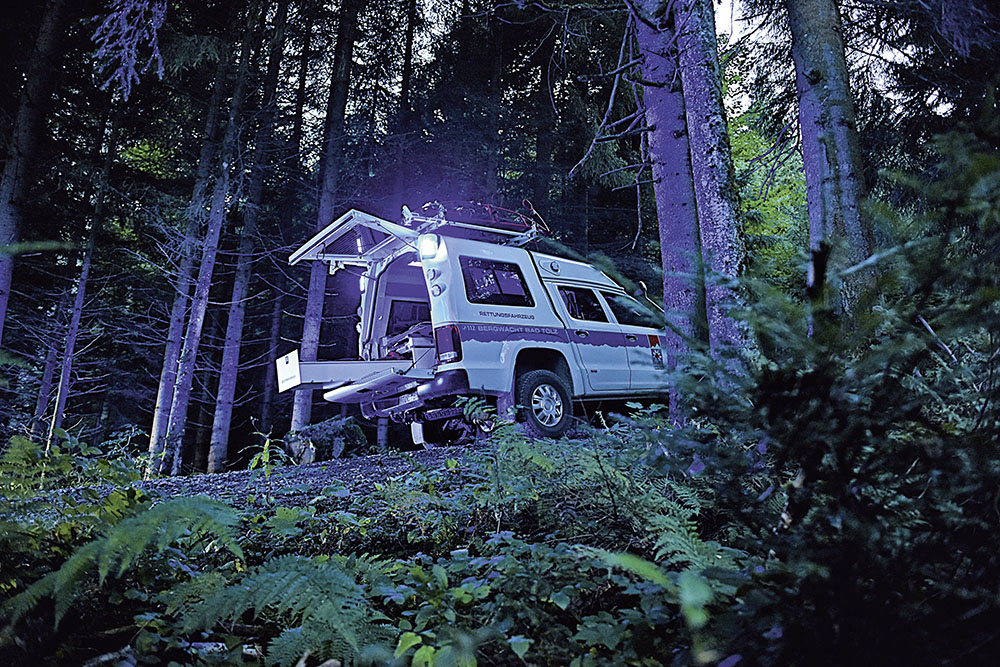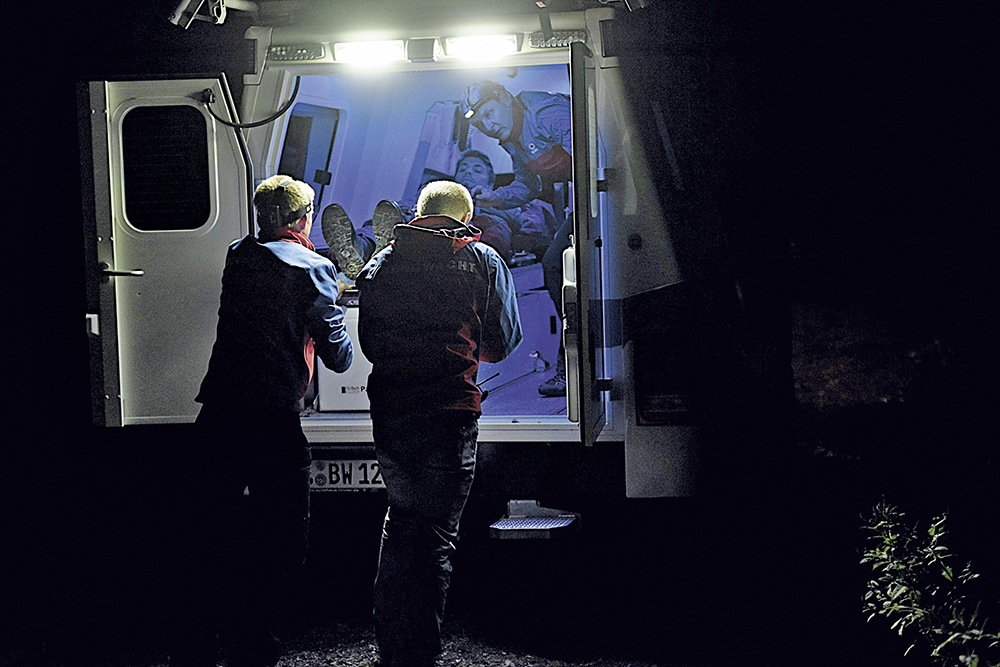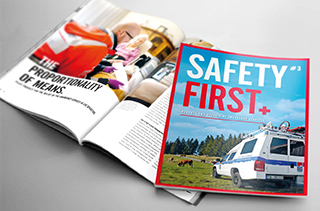

"We are rescuers, not judges," Thomas Käsbohrer quotes his interview partners from Bergwacht Bayern in his book "Am Berg.: Bergretter über ihre dramatischsten Stunden"* (On the mountain: mountain rescuers on their most dramatic hours). The book tells 33 stories about their missions and the preceding quote sums up the attitude of Bergwacht. It's not about what someone did wrong to get into a dangerous situation on the mountain, but about helping that individual out of the situation. In Bavaria, more than 3500 volunteers are ready to devote their time and skills to this task.




The missions in the alpine regions usually have little to do with a standard rescue. Every mission is different. In addition to caring for and rescuing people on hiking trails, ski slopes and high alpine terrain, Bergwacht Bayern also deals with nature and environmental missions, such as fighting mountain forest fires or rescuing animals. Mountain rescue today often means cooperation with rescue helicopters or with the police's or German armed forces' mission helicopters. Accordingly, the training also requires special methods. To do justice to this, the men and women of Bergwacht train in a simulation centre for air rescue in Bad Tölz, the Bergwacht centre for safety and training (Bergwacht-Zentrum für Sicherheit und Ausbildung, BW-ZSA), operated by the Bergwacht foundation. Here you can not only practice procedures and handholds, but you also get the feeling of a real mission. This helps to act calmly in an emergency and also to be emotionally prepared as far as possible.
The 60 m long and 25 m wide hall with a transparent façade accommodates two helicopter cells that can be moved using overhead cranes. If a rescuer hangs on the winch of the helicopter cell, it is up to 14 m to the ground. Vertical climbing walls, a cableway, a house with various slopes and roof coverings are used by Bergwacht, the police and the fire brigade for training. The basin in the middle can be converted. When it is filled with water once a year for four weeks and a current is created by turbines, the German life saving society (Deutsche Lebens-Rettungs-Gesellschaft, DLRG) water rescuers and water watchmen come to train. The training centre is so unique that guests from Germany and abroad come to Bad Tölz for their training time and time again.
Not only the training, but also the resources of Bergwacht Bayern are adapted to the special needs. In order to be able to reach the scene of the accident at any time, even in impassable terrain, specially equipped off-road vehicles are available at every mountain rescue station. Special requirements also require special measures. Since 2013, field worker Andreas Kotte at WAS has been dealing with the special requirements of Bergwacht for their rescue vehicles. Thanks to the intensive cooperation with the rescuers, he has now gained deep insights into the challenges of mountain rescue and is very familiar with the requirements placed on the vehicles. For example, the volume of the warning system must be adjusted to the location in the mountains. Mountain hikers and mountain bikers should not panic when the mountain rescue vehicle becomes noticeable. It must also be possible to mount the mountain stretcher on the roof on a special carrier with a unicycle for summer use or an akja sledge for winter use. In addition to off-road capability, the vehicles must be able to transport patients, take an emergency team on board or provide enough storage space for rescue equipment.



Bergwacht has been procuring its vehicles centrally from WAS for six years. To date, around 70 VW Amarok vehicles with WAS assemblies are already on the road in the Bavarian Alps and low mountain ranges. In cooperation with WAS and Volkswagen, the company switched from Toyota base vehicles to the more powerful VW Amarok with a box body. Apart from off-road capability, the box body is the most obvious feature of the fleet. The case is equipped with a demountable and quickly removable carrying table, among other things. The stretcher for patient positioning is the same as the one found in rescue helicopters. Next to the patient's head there is a fold-away seat for the companion. Of course, the interior of the case can also be disinfected. As soon as it is possible, the patient is transferred from the mountain rescue vehicle to a standard ambulance or helicopter – depending on whether, in an emergency, you reach a drivable road or a suitable landing site first. Bergwacht Bayern's mountain rescue vehicle is a vehicle "taken from practice for use in practice". As befits Bergwacht, it goes without saying that the special vehicle was also first tested in practice and then further developed in detail time and time again. During driving training the rescuers were able to familiarise themselves with the vehicle under real conditions. Preparation is undergone for emergency cases in Bavaria.
If you would like more information about the important work of Bergwacht Bayern and the training centre, you can find it at bergwacht-bayern.de and facebook.com/bwzsa.
*The book „Am Berg.: Bergretter über ihre dramatischsten Stunden“, written by Thomas Käsbohrer reports sensitively and excitingly on particularly intensive missions of Bergwacht Bayern. The book is published by millemari and available as paperback for €24.95. It is only available in German language so far. 25% of the proceeds from the sale go to the mountain rescuers. ISBN 978-3-946014-80-5

This text was first published in the WAS customer magazine „Safety First“. You can request a free copy of this and many other interesting topics by sending an e-mail to marketing@was-vehicles.com.





